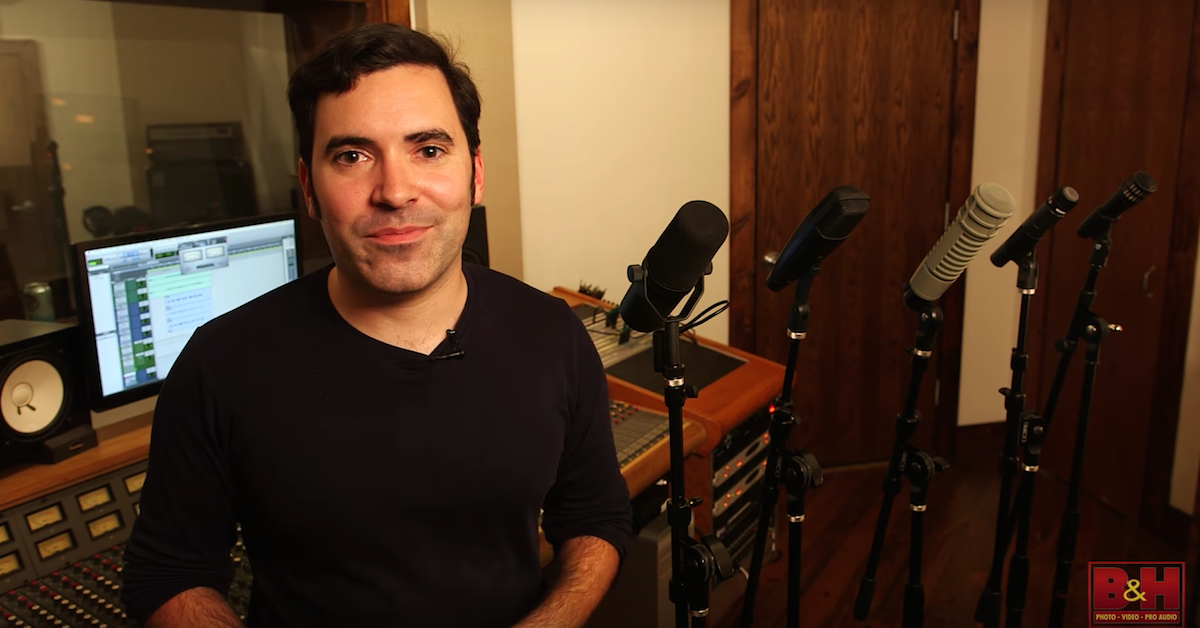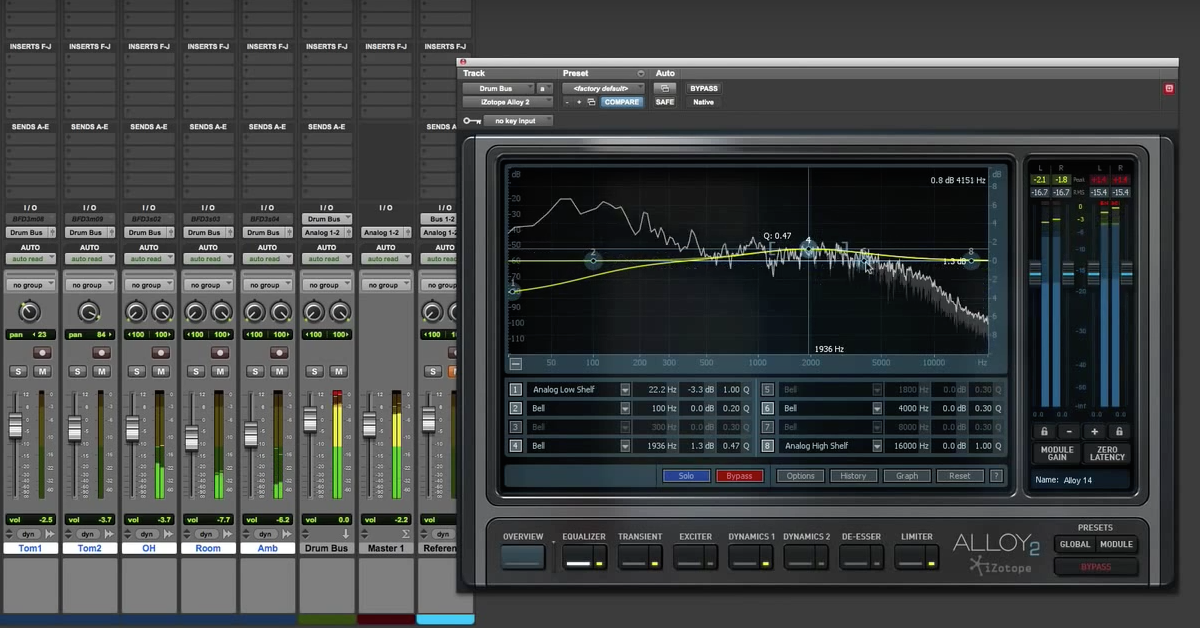Video Mic Shootout: Lavalier vs Shotgun vs Internal Mic
I’m coming at you again from ACME Hall Studios, which is where I’ve been doing a bit of consulting work for a friend that just opened up this cool new place in Park Slope, Brooklyn, and I wanted to take a minute to answer a couple of questions that have been coming in.
So I’ve gotten a few e-mails giving us pretty positive feedback on this new video blog series where folks are asking me, “This looks great, what kind of camera are you using, it sounds cool, what are you using for a mic,” and all of that stuff. We have a bunch of techy nerds in the audience, obviously, I mean that’s the whole point, right? So camera, we just went out and bought a really basic Canon Rebel. It’s kind of a basic model with a basic lens. One thing that I did get is an LED light that’s on this. Seems to get better results with it than without it. That was another $60 on top of the camera for this LED light.
The first couple of videos I did I was actually using a lavalier mic, and you might have seen a funny little lavalier here on my neck, and it was actually a pretty decent sound off of it, but there were a couple of problems.
That lavalier cost me $30, and it came in a box that looked like this, hopefully you can see this, this camera can auto-zoom, and this was an Audio Technica, and I was amazed at the quality you could get with a $30 lavalier mic, but the issues were A, too noisy. I had to spend extra time de-noising those clips, lest someone watch the video and go, “This guy is giving me audio advice and there’s noise all over his thing.”
I got to tell you, when we did that drum mic recording series a little while back, one of my favorite compliments was, “Finally, and audio guy video where the audio actually sounds good.” So I want to make sure that the audio actually sounds decent for you.
But today, I’m trying something different. You’ll notice there’s no lavalier mic on me, so I hopefully won’t have to de-noise this as much, and the other thing with that lavalier is it was very bass heavy, especially when I was mounting it to the collar of a t-shirt, because it’s really not getting pointing my mouth at it. I don’t own a lot of button down shirts, so it wasn’t ideal.
So today I’m using something by sE Electronics, our friends at sE Electronics gave us one of these. This is called a Laser. Hopefully you can get a good look at that, this is a Laser by sE Electronics. This is kind of a DSLR microphone that goes right on top of the camera, and it is powered by a triple A battery, and it is one triple A battery that’s supposed to last for 200 hours, which sounds pretty cool, especially because, of course, after the second — the first video I did with it, I left the damn mic on, so that was 20 hours right there, and the fact that I still don’t have to worry about the battery was kind of nice.
The other thing that they say is cool about it is that unlike a lot of these other DSLR mics, you know, to keep the weight low, they’ll often use plastic. This one is made out of aluminum. Yeah, that sounded nice and all of that, and it sounded really nice, because again, after the first time I used this thing, it literally fell off this kind of cruddy stand I have here, hit the ground from about neck level up, and I’m using it again today, and it seems to be working, and sounding pretty alright.
Now a couple of issues here. There are times if I was doing talking head interviews where you’re going to get less noise from the actual space, if you’re in a very large space, you’d get less room tone if you’re in an unideal acoustic environment, having that lav can be helpful.
It’s also helpful because if your subject turns away, you’re going to get less kind of drop off.
Of course, one thing you do have to worry about with a lav is too much shuffling noise if people are fussing with it too much.
So I figured some of our audio nerd listeners would want to compare what these two mics sound like on a camera. This cheap lav versus this fairly nice Laser top mounted microphone.
So I want to let you guys hear these here. You’re listening right now to the sE Electronics Laser, and now, if I can get it together, I’m going to put on my little lav mic.
Now, this lav mic originally came with a little fuzzy thing that’s supposed to go on top, but that kept on falling off on this $30 model, so I’m kind of going without it. It hasn’t been much of an issue.
Alright, so I’m going to plug this in now, and first we’re going to hear this lav how it sounds raw. A bit bass heavy, especially mounted on my neck, and a bit noisy, with a very, very simple audio processing I did — not hard to do, didn’t take a lot of time, but just the extra step, who needs it? Our most precious resource is time, and the more of it I can save, the more cool things we can try to do.
Alright. So I’ve now plugged in this Audio Technica lavalier mic, which I’ve been clipping here. If you were going to put this on someone with a button down shirt, it might kind of go lower here on the sternum pointing upwards, and you get a slightly brighter sound there as opposed to what I’ve been having to do with this mic, which is putting it up here.
So this is the sound of the lavalier mic up by my collar, and this is the raw sound of the microphone. We can tell it’s a little higher noise, but we do get a little less of the actual sound of the room.
Here it is again unprocessed. A bit bass heavy, especially in this position, and a bit noisy, and now I’m going to switch back to that camera mic.
Now we switch back to the Laser DSLR mounted microphone that kind of sits on top of the camera.
It sounds pretty good. Pretty low noise, but again, it will pick up more environmental noise if we did have a loud air conditioner in here, we might hear more of that with this mic than we would with a lav, but overall, sound quality is very good and will give you a great natural picture of what the room sounds like.
They kind of advertised it as being more natural, more flat, and less hyped than some of their competitors, and I think it also less expensive than one of the major competitors, but it seems to be built very solidly with the aluminum I have dropped, and with that battery that is fortunately going to last you for hours and hours, even if you’re an idiot like me and leave it turned on.
One last thing I wanted to compare for you guys — I’m going to unplug this top mic so you can hear what the built-in mic of the camera sounds like in this environment.
Alright, we’re free wheeling now. This is the sound of the basic mic built into their Canon Rebel. It might get a little bit more overall room sound, maybe the sound is a little bit thinner than this top mounted mic, it might not be quite as directional as this sE Electronics mic, which I believe is a bit more of a shotgun pattern.
So there it is, a three mic shootout. We’re talking built in mic in the camera body, we’re talking this lavalier that cost me $30, and it works surprisingly well for $30, although not up to the caliber that I’d want, and this top mounted Laser DSLR mic be sE Electronics.
Now we’re back to listening on the sE Electronics Laser. Out of the three, I think I’m sticking with the sE Electronics one. I think it’s going to serve us well. I do have to say if I was doing more of a multi-mic shoot situation, I would probably rely a little bit more heavily maybe on some nicer lavaliers that we probably would get for that kind of shoot.
Also for these talking head video blog things, it might be fun to occasionally hook up some nice microphones, so we’ll do one shoot with an AKG 414, one with the U87, and you guys can kind of hear us shoot out mics a little bit on video, and you can hear how the sound changes a bit from episode to episode depending on the microphone and depending on the room.
If we’re audio nerds, we may as well do it up that way.
So look for that, but for now, if you don’t see a mic in a shot and it doesn’t sound or look like I’m using a lav, probably going to be this sE Electronics Laser mic, which seems to be serving us pretty well. So thanks guys for sending this one over for us to try!
Alright, this is Justin Colletti for Sonic Scoop. Thanks again for hanging out with me on the video blog.
Remember, subscribe here on YouTube. If you haven’t already, go to SonicScoop.com, subscribe there, and not only will you get our newsletter, all our great stories like big wins, audio upgrades that really matter, but you also get — if you want them, notices on bi-weekly deals. We have some great sponsors who will do kind of special deals just for our readers through the newsletter.
So you can join the tens of thousands of folks who get the newsletter every week, or the hundreds of thousands of folks reading our sites online, and if you have any questions, reach out any time!
Alright, thanks!





